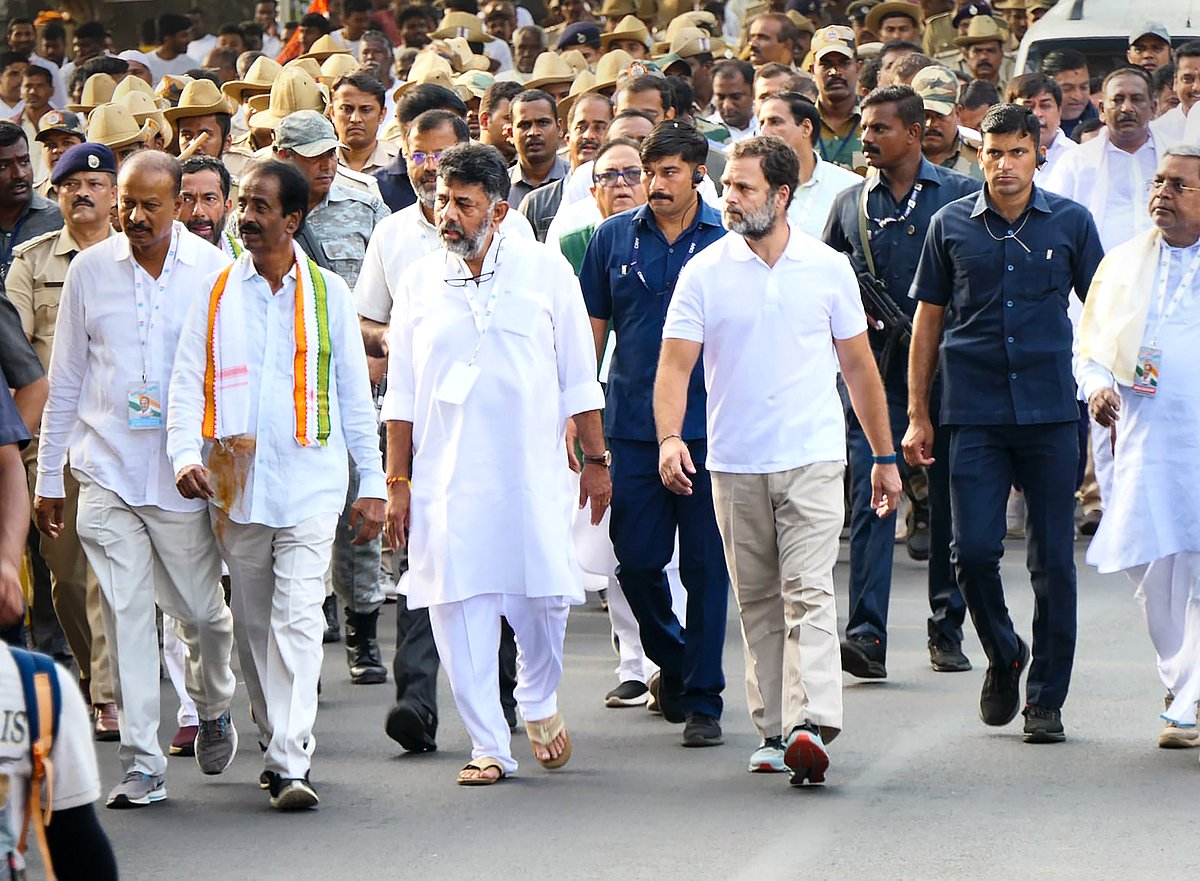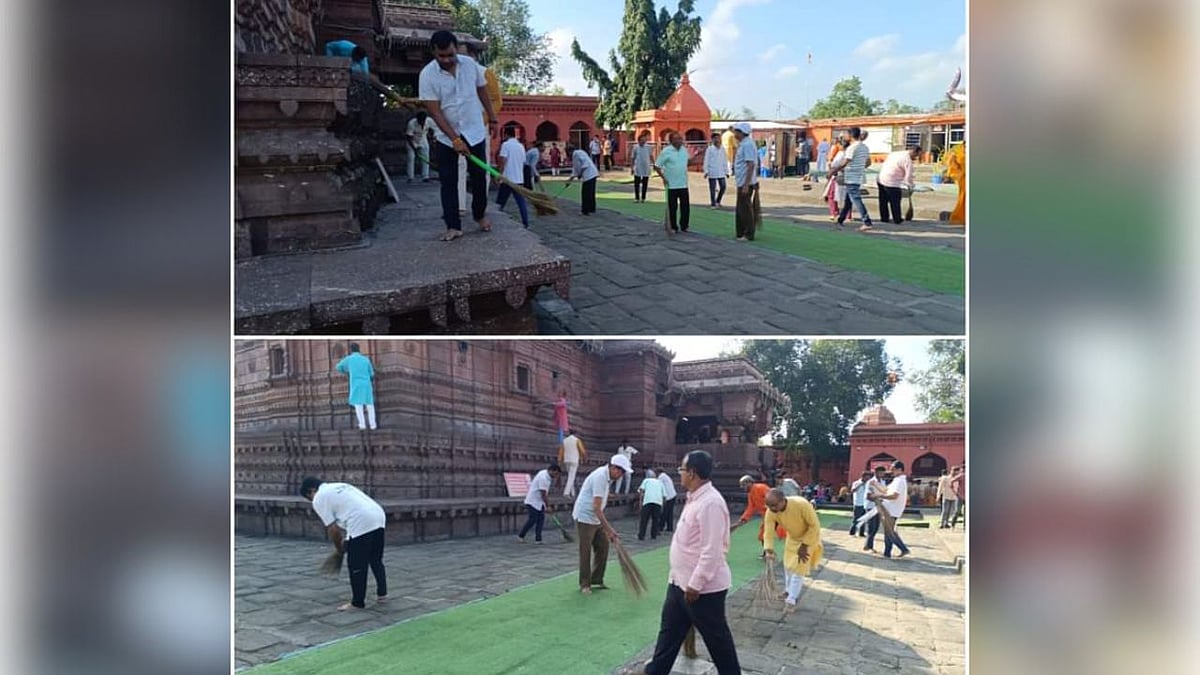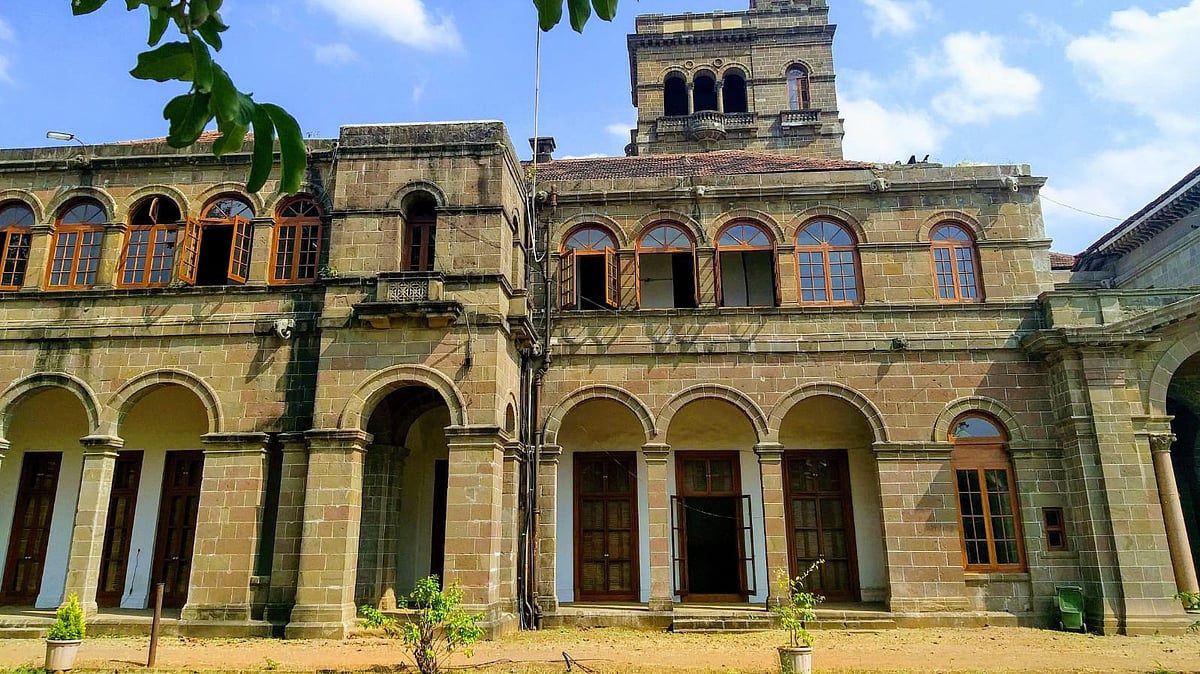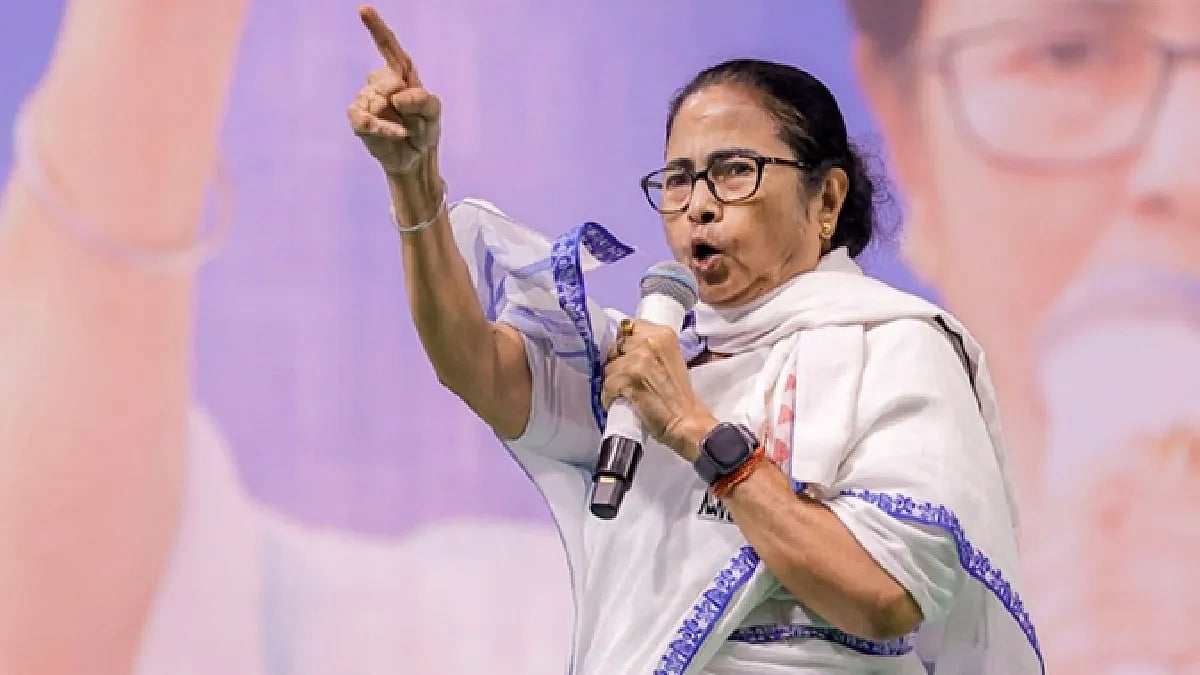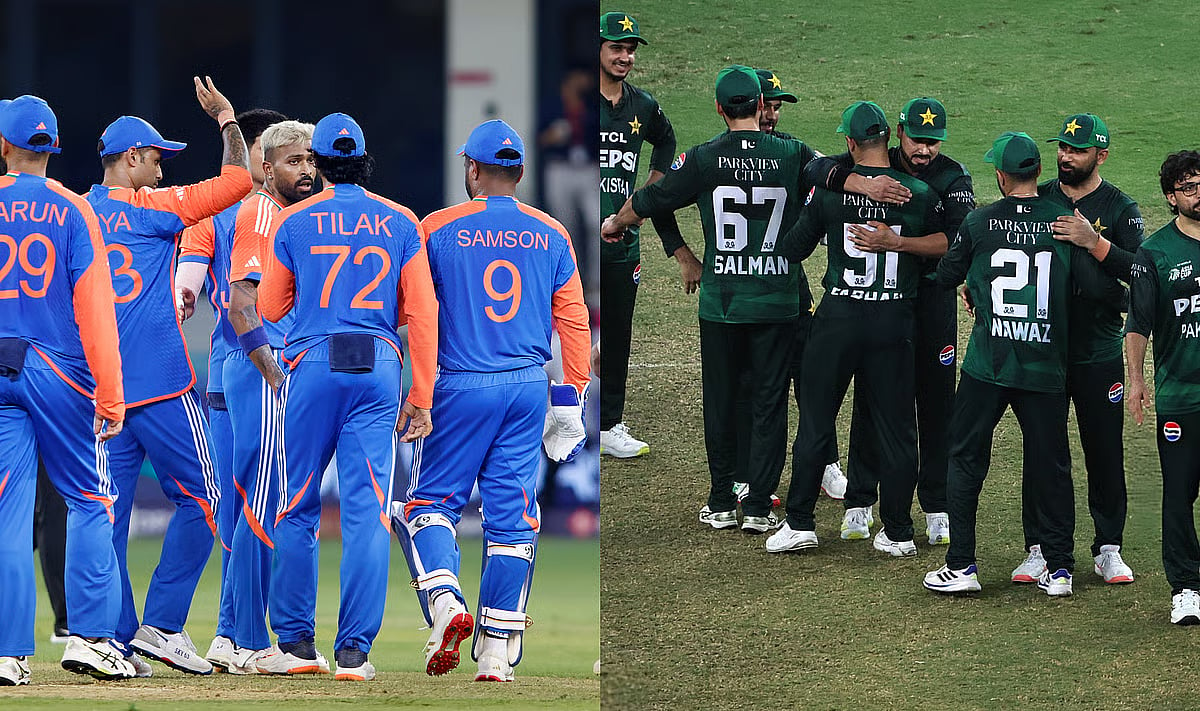Liberals who, a few months ago were wishing for the Congress to die as it had failed to perform its duty as the main Opposition party, are now a happy lot. They see hope in the Congress and now feel that the Congress might give a good fight to the Narendra Modi-led Bharatiya Janata Party. Their optimism is not misplaced, but to imagine that the world will suddenly change is erroneous. The world which stares at us now has taken many years to take shape. Hindutva as it is today was not made in a day.
The Rashtriya Swayamsevak Sangh and the Hindu Mahasabha led by K B Hedgewar and V D Savarkar discovered this political philosophy in their own way during the mid-1920s. And their followers have painstakingly and slowly been building the edifice, which finally replaced the Congress system in 2014 with the arrival of Mr Modi. This new system has its roots much deeper than liberals had imagined, and is further strengthened by unprecedented support from big corporate houses, within the country and outside. With their support it has successfully created a narrative which looks attractive to the young generation and older ones too. Therefore, the battle won’t be easy for the Congress; as of now there is no guarantee that it will succeed anytime soon. But there are three steps that the Congress has taken which have generated some hope.
The Congress’s decision to hit the streets to counter the central agencies’s attempt to interrogate Sonia Gandhi and Rahul Gandhi in the National Herald case was the beginning. This was followed by the party’s decision to throw open the election of the Congress president and the Gandhi family’s staying away from the contest — an attempt to counter those who accuse the Congress of dynastic politics. But it is the Bharat Jodo Yatra which has really galvanised the imagination of the people at large. If the first step was the willingness to take the fight to the BJP’s turf, the second was the desire for the Indian version of glasnost and perestroika in the party. It was the third step which made people realise that the Congress had finally woken up to the fact that it has to make a Himalayan effort if it has to survive as a political party.
The Bharat Jodo Yatra has made many sceptics believe that the Congress is serious and is literally willing to walk the extra mile to retrieve the liberal space which the country has conceded in the last few years. That is the reason that hundreds of civil society organisations, which have been staunch critics of the party in the past and which had given up on the party in the present, have decided to join the yatra. And the kind of support the yatra is getting from the public is proof that it was a step which the Congress should have taken long ago. But better late than never.
For any political party to capture the imagination of the people, it should have a very strong ideological edifice, propelled by an ideal, which inspires the people towards a bigger sacrifice. The 137-year-old Congress, during its long journey, has made many mistakes — and the biggest of all was that it reduced itself to a party of governance; it took its cadre and the organisation for granted, taking no initiative to develop an organic link between the party and the government. The Congress was a vibrant organisation till the mid-1960s but once Indira Gandhi became the party supremo, she deliberately weakened the party organisation. There is no doubt that she faced stiff resistance from the party bureaucrats and regional leaders who used to control the organisation and she felt stifled in her initial years. Her revolt against the party syndicate and regional leaders could be seen as her attempt to break free from the fetters of the organisation. For her the organisation was secondary. She convinced herself that as long as she was popular and winning elections, the party did not matter. No wonder she split the party twice and threw away powerful leaders, and still survived. She surrounded herself with pygmies who had no social base and no political capital.
This process continued after her demise too. Rajiv Gandhi was too naive in politics but when a seasoned leader like PV Narasimha Rao became the Prime Minister, he looked at the party with suspicion. He believed that Government agencies were better placed to keep him in power. By the time Sonia took over the reins, it was too late. Though the Congress formed the government in 2004 it made no effort to build the party afresh and create new cadre. As a result, during its second term when the government faced attacks from all corners of society, there was no one to defend it. The party was waiting to face a humiliating defeat. And it did. It is in this context that the Bharat Jodo Yatra has provided a golden opportunity to build the organisation afresh, but it needs follow-up action.
On the ideological front, the Bharat Jodo Yatra is weaving a counter-narrative to BJP’s robust Hindutva. It is constructing an alternate vision for the nation. To create a new narrative, the old narrative must be discredited, condemned and discarded openly. Rahul Gandhi has been scathing about Hindutva. Individually, he has been painting Hindutva as a divisive ideology which indulges in hate-mongering, spreading venom in society, and demonising Muslims and other minorities for votes. He has been unsparing with Mr Modi and the RSS, calling the RSS a dangerous organisation for Mother India and Mr Modi a dangerous leader.
But it has been a lonely road. His own partymen either did not believe in his leadership or were too scared to take Mr Modi and Amit Shah head-on. One senior leader of the party told me that Congress MPs in Parliament avoid speaking against Mr Modi and Mr Shah, as they fear them. Rahul Gandhi’s initiative to walk 3570 km from Kanyakumari to Kashmir has suddenly catapulted him into the limelight not only as a serious politician but also the only one who is willing to pay any price to fight Mr Modi and the RSS leviathan. The kind of crowd his yatra is pulling is proof that people have discovered faith in his leadership. This has compelled reluctant Congress leaders to either fall in line or become irrelevant. The surrender of G 23 leaders to support Mallikarjun Kharge during the Congress president’s election is proof of that.
The yatra is also giving shape to a ‘new’ nationalism as a counter to the majoritarian nationalism. The BJP’s nationalism excludes minorities, especially Muslims and Christians. Even among Hindus, Dalits, OBCs and women are not accorded the same status that the upper castes enjoy. Despite Mohan Bhagwat’s assertion of discarding the caste system, Hindutva believes in upper caste, particularly Brahmin, hegemony in every sphere of the society and polity. Against majoritarian nationalism, the ‘new’ nationalism derives its strength from the legacy of the freedom movement. It is trying to imbibe the centuries-old Hindu Concept of Sarva Dharma Sambhava. Unlike Communist thinking which negates the role of religion in the process of nation-building, Gandhian nationalism accepts religion as an integral part of human civilisation but abhors its divisive tendencies. Once Gandhi was asked, “What is your religion?”, he replied “My religion is the summation of all religions”. In this yatra members of all faiths are welcome.
The Congress should have been doing this all along. The Congress after Independence forgot to carry forward the notion of nationalism which had ignited millions of Indians to stand up against the might of the British empire. In its zeal to govern, and due to the influence of Leftism, it forgot to reinvent nationalism for modern democratic India. The void which was created was filled by the RSS brand of nationalism. In the absence of positive and inclusive nationalism, it was easy for the RSS and the BJP to market and sell its brand of nationalism. Mr Modi took that nationalism to another level. The patronage of the state made it more fashionable and omnipresent. Now this ‘new’ nationalism has the potential to successfully challenge the state-sponsored variety of nationalism, provided the yatra’s spirit is carried forward. This is a Herculean task. No party can accomplish it alone; civil society and the liberal crowd will also have to pitch in. In the process, there will be an effort by the state to demonise them, discredit them and destroy them — but if they stand firm, there is light at the end of the tunnel.
The writer is Editor, SatyaHindi.com, and author of Hindu Rashtra. He tweets at @ashutosh83B
